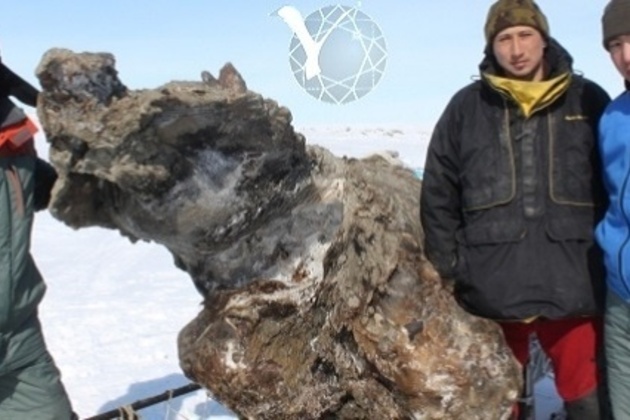
A render of a future Blueseed ship, via Blueseed
It’s a sunny Tuesday afternoon in Palo Alto, and seasteading
entrepreneur Max Marty is trying to persuade me that putting 1,500
immigrant entrepreneurs together on a floating startup city in
international waters 12 miles off the coast of San Francisco is a good
idea.
“The exchange of ideas and collaboration is really, really helpful in
the creation of new technologies and innovations,” Marty tells me. “It’s
really a win-win-win for everybody—obviously it’s a win for the
entrepreneurs, but also for the local governments, for the economy, for
the environment.”
“It’s an ideological bent of ours,” Marty adds. “We like win-win situations.”
For anyone who has ever met a “seasteader,” this enthusiasm is
unsurprising, if not entirely comprehensible. The founder and CEO of
Blueseed, Marty is at the forefront of a small but zealous cadre of
Silicon Valley libertarians who view the ocean as a new frontier where
people can live and work without the burden of national boundaries and
government regulations. His unusual startup is the latest—and most
promising—attempt at achieving this techno-libertarian dream.

Blueseed CEO Max Marty, courtesy Marty
Part-tech incubator and part-college dorm room, Blueseed is billed as the “Googleplex of the Sea,” promising
a “perpetual hackathon atmosphere.” The company plans to lease a
decommissioned 1,500-passenger cruise ship, and outfit it with coworking
spaces, high-speed wifi, 24-hour concierge services, and a gym, with a
tentative launch date of spring 2014.
As bizarre as it may sound, the idea has gotten a surprising amount of
interest from entrepreneurs and partners, if not from investors.
According to Marty, about 800 startups have already applied to join
Blueseed, about 400 of which are being considered to join the ship.
Interestingly, about 20 percent of the applicants are from the US,
indicating that Blueseed’s appeal goes beyond immigrant entrepreneurs.

The breakdown of Blueseed’s applicants by country. Via Blueseed
For now, however, Blueseed is still conceptual. After receiving an
initial $350,000 seed round last year, the startup has been looking for
funding sources to provide the $27 million needed to actually launch the
ship. (Naturally, the company accepts bitcoin.)
If Blueseed gets the funding, it’s not clear how the US government
would react to a ship full of foreign nationals floating off the coast
of San Francisco with the explicit goal of circumventing US immigration
law. Technically, the ship will be out of the jurisdiction of US law and
customs enforcement, in international waters governed by UNCLOS, a
loosely followed maritime treaty. (The US is not actually a signatory,
but has typically deferred to the treaty’s rules.)
Marty is confident that the US won’t want to “establish precedent” by
taking action against a cruise ship in international waters. But he
concedes that there are a number of other ways the US government could
make life difficult for Blueseed and its passengers, including holding
up its wireless Internet permits and making it difficult for passengers
to travel to and from shore on business and travel visas. So far,
though, there has been no public opposition to the project from any
government agencies or politicians.
But the project is also a logistical nightmare. Arrangements have to be
made for supplies, ferry transportation, legal support, wireless
Internet, medical care and insurance, and a million other contingencies
that could come into play when 1,500 people live together on a boat for
6-12 months.
But regardless of whether Blueseed ever gets in the water, the project
could represent the next evolution of the techno-libertarian ocean
pioneering popularized by Silicon Valley’s Seasteading Institute.

The plan for Blueseed's first ship is to moor it just across the international water line. Map via Blueseed
Founded in 2008 by Patri Friedman, a former Google engineer and
grandson of free-market champion Milton Friedman, and aided by a $1.25
million donation from Paypal billionaire Peter Thiel, the Seasteading
Institute envisions a maritime utopia where floating city-states act as
incubators for new forms of government and “compete” for citizens.
On paper, the Seasteading Institute is the ultimate confluence of the
most ostentatious elements of Silicon Valley libertarianism, combining
Randian worship, technological determinism, and billionaire youth into a
Libertarian 2.0 Waterworld.
In person, however, it’s hard not to be endeared to the hippie
capitalists who run the think tank. The Seasteading Institute’s offices
are in the Oakland Embarcadero, in a building called The Leviathan,
which is actually designed to look like a sea monster eating a barge. On
a sunny Wednesday afternoon last week, the dog to human ratio in the
office was about 1:1, and staff members were happy to brief me on
maritime laws and various emerging “aquapreneur” markets.
Seasteading Institute Senior Director Randy Hencken is trying to dispel
the idea that seasteading is strictly the purview of super-rich
libertarian tech gurus.
“Everyone always writes that we are building libertarian utopias for
Peter Theil,” Hencken said. "As an Institute, we are politically
agnostic. We see seasteading as a technology rather than a political
ideology."

The Seasteading Institute Team, from left to right, Randolph Hencken, Charlie Deist, George Petrie. Via Seasteading Institute
Theoretically, at least, the seasteads would work like a marketplace of
governance. Each seastead would be an autonomous city-state that could
decide its own system of governance and rule of law. Citizens who wished
to move to a seastead would then be able to choose the governance
system that suits them, and leave if they were not satisfied.
The idea, Hencken said, is not to have no laws, but to develop better laws.
Ideally, there would be multiple seasteads trying out different types
of governance, he explained. Those could include libertarian seasteads,
but also dictatorships, participatory democracy, and even new forms of
governance like a cryptographic legal code. Christians could live on a
Christian seastead governed by Biblical laws, atheists could bar
religion on their seastead, and so forth.
“People are looking for known rules in government,” Hencken explained.
"The problem that we have now is the rules are always changing."
But while Hencken insists that seasteads are not meant to be “utopias,”
his vision of the movement’s potential is grandiose bordering on
delusional.
"It's not only about government—it's about making the planet better. We
are creating more wealth, making the planet cleaner and healthier,
curing diseases that we couldn't cure on land,” he said. Other benefits
of seasteading include "reducing global warming," "feeding the hungry,”
“and creating new fuel and fuel sources.”
"It's about ensuring humanity has a future."

"The Swimming City" by András Gyõrfi, winner of the Seasteading Institute’s 3D Design Contest.
But without an overarching system governing seasteads, each community
would be free to make its choices, like what kind of businesses to
allow, how to dispose of waste, and how to police its citizens. So if
one seastead started polluting the ocean, for example, the other
seasteads would have no recourse to stop it, besides cutting off
economic relations.
It’s easy to imagine seasteads as floating dystopias, and even some of
the potential seastead industries suggested by the Institute (e.g.
medical tourism, unregulated drug trials) sound terrifying.
I asked Hencken about some of the more sinister possibilities. What if
lax laws turned a seastead into a haven for child pornographers, or if
white supremacists decided to start their own seastead?
Hencken largely dismissed these hypotheticals. In the first case, he
argued that the threat of citizens leaving the community would likely
force the seastead to change its laws. In the second scenario, other
seasteads would likely end relations, leaving a lonely floating island
of white supremacists. (Hencken drew the line at my idea of a Most
Dangerous Game Seastead though, calling it “far-fetched.”)
This ideological zeal has lead some Bay Area libertarians to dismiss seasteaders as the Billy Carters of the movement.
“Sure, it’s an interesting idea, but it’s such a waste of money,” said
one Facebook engineer I met at an event hosted by Sen. Rand Paul (R-Ky.)
last week. “These guys are pouring millions into these experiments
instead of putting it towards something useful, when they could actually
get something done.”
“I hope that Blueseed is the start of a new string of movements
that use technology to address what have normally been thought of as
political problems." — Max Marty, Blueseed CEO
With Blueseed, Marty, the former director of business strategy for the
Seasteading Institute, has aimed to address these criticisms.
“Often what happens, especially to people who have these kinds of big
ideas, is that they don't ground those ideas in practical realities,
which are necessary to make them work,” Marty said. “There are certainly
people who have had utopian visions, but the definition of a utopia is a
place that doesn't exist. A lot of times grandiose ideas go well beyond
the scope of what is actually possible.”
“I hope that Blueseed is the start of a new string of movements that
use technology to address what have normally been thought of as
political problems,” he added. “Instead of complaining or trying to
leave the situation, using the market, technology to create some sort of
venture that addresses what the problem is.”
While Blueseed may be a step forward in ocean colonization, the
Seastead Institute is still holding out hope that someone will establish
a permanent residential settlement on the high seas.
“"They definitely fit with the idea of of seasteading in that they are
looking for an opportunity that doesn't exist on land, but I don’t think
that Blueseed will ever be a permanent settlement,” Hencken said. He
predicts that the world will see the first seastead city “within the
decade.”
"At first it is going to be small,” he adds. “Just like the Pilgrims coming to America."


 When I was born, in the mid-1980s, the amount of CO2 that had accumulated in the atmosphere was just enough to account for 350 ppm—the
amount climatologists like NASA's Dr. James Hansen have identified as
the threshold between a stable climate and an unpredictable, potentially
volatile one. Between the 1800s and then, humans—mostly the United
States and Europe—had built enough carbon-belching power plants and
factories to add 70 ppm to the atmosphere.
When I was born, in the mid-1980s, the amount of CO2 that had accumulated in the atmosphere was just enough to account for 350 ppm—the
amount climatologists like NASA's Dr. James Hansen have identified as
the threshold between a stable climate and an unpredictable, potentially
volatile one. Between the 1800s and then, humans—mostly the United
States and Europe—had built enough carbon-belching power plants and
factories to add 70 ppm to the atmosphere.











 The
paleontologists, who hail from the Institute of Applied Ecology
at Yakutsk, suspect the mammoth fell into a swamp and was trapped.
There, it was attacked by scavengers, and was half-eaten—they found the
trunk separated from the carcass. The blood that flowed out from its
wounds froze in the water and was preserved for thousands of years
there, until the scientists chiseled it out earlier this month.
The
paleontologists, who hail from the Institute of Applied Ecology
at Yakutsk, suspect the mammoth fell into a swamp and was trapped.
There, it was attacked by scavengers, and was half-eaten—they found the
trunk separated from the carcass. The blood that flowed out from its
wounds froze in the water and was preserved for thousands of years
there, until the scientists chiseled it out earlier this month.


 Autism resists both definitions and treatment within the medical
community. But the strange historical interpretation of autistic
behavior and symptoms has led to novel experimental treatments for the
disorder. Sometimes a disease that doesn’t fit neatly into the medical
paradigm must go outside that paradigm in search of nontraditional
treatment options.
Autism resists both definitions and treatment within the medical
community. But the strange historical interpretation of autistic
behavior and symptoms has led to novel experimental treatments for the
disorder. Sometimes a disease that doesn’t fit neatly into the medical
paradigm must go outside that paradigm in search of nontraditional
treatment options.
















